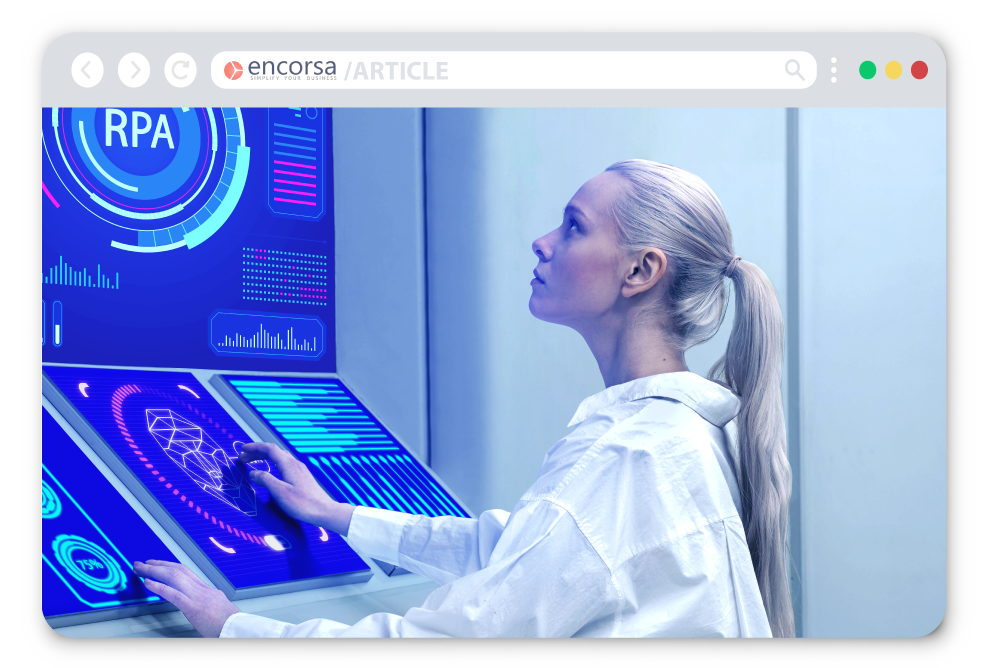
In just a few years, RPA (Robotic Process Automation) bots have become a multi-billion dollar industry rapidly evolving daily, promising efficiency that human employees cannot achieve. Extremely high operating speed, zero errors, a 24/7/365 work schedule—everything sounds ideal. But is it really that straightforward?
 Author: Radu Mărgărit
Author: Radu Mărgărit

In this article, we aim to identify the weaknesses of RPA bots and potential solutions for these issues.
An RPA bot can operate in any software application just like a human or even better, with one condition: the task must be repetitive. Additionally, the environment in which it operates must remain unchanged (i.e., no modifications in interfaces, new windows, etc.). Therefore, RPA bots are perfect for repetitive tasks in controlled environments. Similar to mechanical robots in factories, an RPA bot will execute the same set of operations infinitely, without errors, quickly, and cost-efficiently. In short, an RPA bot is very good at executing simple tasks. However, in the case of linked tasks, if the last task fails, the entire sequence may need to be restarted, which could reduce the process’s efficiency or even create problems (for instance, an incorrect invoice due to an error in a previous step cannot simply be deleted and regenerated; it may need to be reversed).
Example: If one of an employee’s tasks in the marketing department is to download product sheets from a website and then print them, this activity can be handled by an RPA bot simply and efficiently without any issues.
As mentioned above, everything works perfectly in controlled environments, but in the real world, disruptions occur, and bots are not yet intelligent enough to dynamically adapt to changes in the environment. In the previous example, the website from which the employee downloads product sheets might not just be down (a simple fix for a bot), but it could also undergo changes—new windows might appear, new buttons, pop-ups, or link changes. These are things a human employee would identify visually in seconds, but they can cause issues for the bot, which wouldn’t be able to handle them without some reprogramming. You might say reprogramming is accessible in the “low-code” era. True, but maintaining hundreds of bots that need frequent reprogramming might not be as simple.
And that’s not all! Let’s imagine that the bot needs to download all the product sheets from the website and, due to a change on the site, it cannot correctly identify the existence of new product sheets and starts over, downloading and printing them again and again… And since the task was set to run overnight, in the morning you might find the printer out of paper or toner, with product sheets printed thousands of times, and server storage consumed.
Software applications have a lifecycle; like humans, they age and die after a while. However, people like predictability and generally fear the new. So, they prefer to keep dying software alive, hoping it will work a little longer. Instead of replacing it and rethinking processes in a modern solution, integrated via API with other solutions, we use RPA bots as a kind of life support to keep inefficiency alive.
Example: Our WMS (Warehouse Management System) is old, the company that made it sold the business and left; we don’t have the source code, but we have an IT colleague who knows how to keep it running. We’re used to it, and even though it still has errors, it gets the job done. So, we’d like to modernize it with some RPA bots to automatically input data into it and generate some Excel sheets with stock levels, which Ava will process a bit before we import them into the ERP.
Of course, there are exceptions, and in some cases, we rely on external systems that we cannot change and with which we cannot communicate via API (such as various government institution systems). In these cases, using an RPA bot to transfer data becomes a recommended operation.
In most cases, the processes carried out in companies are complex and interconnected and involve more variability and unpredictability than the example given. In a small company, a receptionist performs dozens of different tasks that change daily and are connected to other colleagues’ activities. How do we orchestrate a process where a bot takes over a task started by a human employee, carried out until a decision needs to be made, and then, depending on the result, we continue the process manually or automatically? For such a virtual space where humans and bots operate, a BPMS (Business Process Management Software) is needed to orchestrate the process, allowing task transfers between humans and bots, as well as automated decision-making when possible.
An RPA bot cannot change or optimize a process; it simply executes a process. On the other hand, a BPM improves the performance of an RPA implementation by ensuring that the automated process is optimized and delivers the expected results. The RPA bot mimics human activity, but sometimes the wisest course of action is completely redesigning the workflow, not just replacing a human with a bot.
Example: In some cases, companies have implemented an RPA bot to “stamp” documents better and faster than a human employee without considering whether they could redesign the process entirely so that a stamp is no longer needed.
RPA bots are easy to implement and bring immediate benefits in terms of cost, efficiency, or execution time, but they are not a panacea for automation. By combining RPA bots with BPMS platforms, we can enhance the capabilities of both systems and build more effective solutions than if we used them independently.